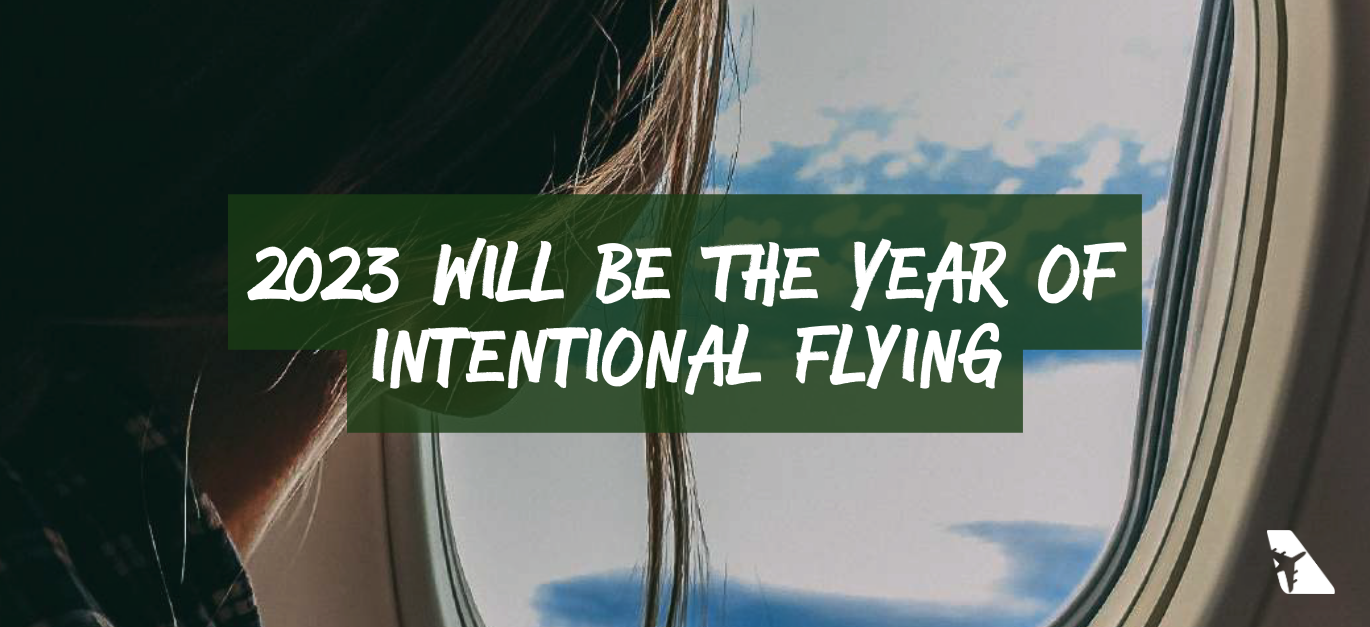ARTICLE
Holly Boyd-Boland, VP Corporate Development & Sustainab ...

Our new Sustainable Aviation 2023 Trends report looks at how and why the battle for climate action is expected to grow more heated this year and what visionary executives can do to stay ahead. Download the full report here.
In 2023, we expect to see more people making more “intentional” flights, such as choosing the least carbon-intensive route, combining business trips and vacations, or even swapping short flights for the train.
In a New Year’s LinkedIn post, SimpliFlying CEO Shashank Nigam showed how he had reduced his pre-COVID quota of 45 annual flights down to 15.
He’d done so by thinking carefully about whether he needed to be at conferences in person (in almost every case, the answer has been no), combining family vacations with business trips and taking the train on shorter routes (for example, London to Edinburgh).
He also made a point of flying direct where possible, which is better both for the airline and the environment, while offsetting every flight.
Shashank calls this “intentional flying,” a trend we expect to see more of in 2023.
KPMG told Reuters that the firm has an internal carbon price to encourage employees to think twice about flying. That price then funds green investments.
According to KPMG’s Gavin Geminder, business travel “should be reserved for the in-person moments that matter.”
Meanwhile, big four accountancy firm EY’ nudges’ employees to choose greener options in its internal travel engine or not to fly at all.
Quoted in the Financial Times, EY’s Global Vice Chair Steve Varley says, “For example, if they are booking a flight which is returning on the same day, we start to nudge them to turn the meeting into a Teams [online] meeting rather than a physical one.”
Expect to see more companies adopt this philosophy in 2023, especially as campaigns like ‘Travel Smart’ want businesses to reduce their travel by 50% compared to 2019 levels.
Increasingly more people are jumping on the bleisure trend, combining business and leisure trips as Shashank has done, with not every segment of that trip being made by plane. For example, Shashank took the train from London to Scotland, choosing it over a domestic UK flight.
Train companies are pitching themselves as more sustainable alternatives to short-haul flights; one example is Trainline’s “I came by Train” campaign.
In fact, legacy airlines are seeing some advantages in cooperating with their local rail network.
In Ipsos-MORI’s 2022 international climate study, 52% said they avoid taking flights at least from “time to time”, which is an increase over the past year of 11%.
So, on some level, the messaging about aviation is hitting home.
This comes as 2022 saw celebrities being panned for taking short private jet flights. YouTuber “Mr Beast” was criticised for flying a student to Paris to buy him a baguette, a stunt that emitted as much CO2 as the average Pakistani does in a year.
Of course, flights will still be full in 2023. But businesses and individuals will be thinking more carefully about their flight choices.
More aviation-specific sustainability updates and analysis can be found in our weekly Sustainability In The Air newsletter, led by SimpliFlying’s Research Director Dirk Singer. Do subscribe to our send-out to stay on top of the latest trends.
© 2022 SimpliFlying Pte. Ltd.